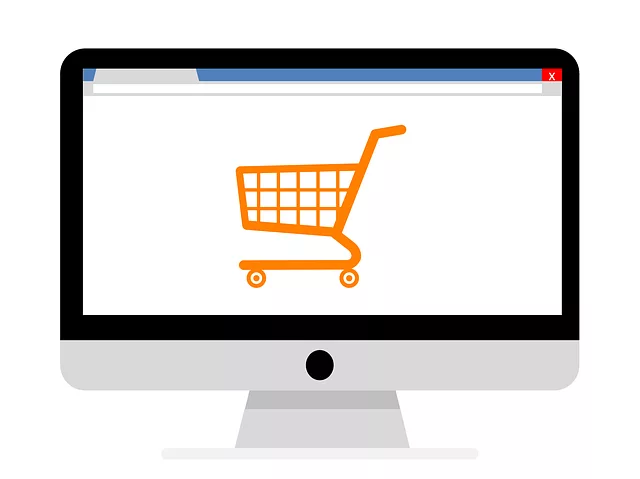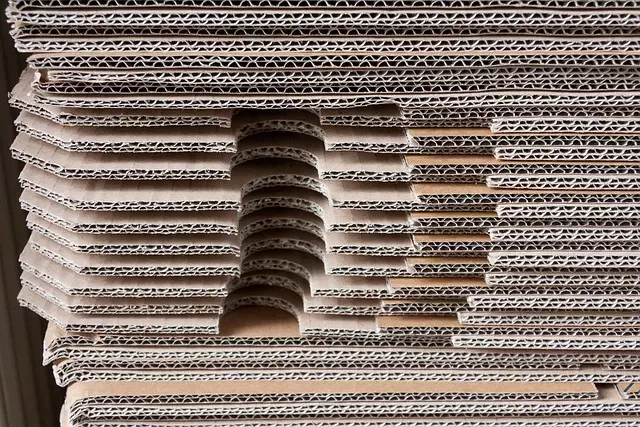E-commerce packaging has evolved into a multifaceted tool that not only safeguards products during transit but also serves as a brand’s first impression and an expression of its environmental commitment. The shift towards sustainable e-commerce packaging solutions is driven by both the need for cost efficiency and the growing consumer preference for brands that prioritize sustainability. Custom e-commerce packaging designs that emphasize minimalism, reusability, and the use of recycled materials resonate with eco-conscious consumers and offer a smart marketing edge. Companies are also optimizing costs through on-demand packaging and return programs, while innovations like biodegradable packing peanuts and modular designs significantly reduce carbon emissions and waste. E-commerce businesses that strategically evaluate their packaging options can differentiate themselves in the market, foster brand loyalty, and contribute positively to environmental conservation without compromising on product protection or customer satisfaction. Leading companies like EcoPac Innovations and PackGreen Solutions are setting industry standards with their sustainable and economical e-commerce packaging solutions, demonstrating that environmentally friendly practices can align with financial efficiency.
Navigating the dynamic world of e-commerce necessitates a strategic approach to packaging—a balance between shielding products and safeguarding profitability. This article delves into transformative strategies for achieving cost-effective e-commerce packaging solutions without compromising on sustainability or brand identity. From optimizing material choices to crafting bespoke designs, we explore the multifaceted role of packaging in enhancing customer satisfaction while maintaining a competitive edge. Join us as we examine practical approaches, supported by compelling case studies, that underscore the importance of e-commerce packaging solutions in sustainable practices and brand differentiation.
- Optimizing E-Commerce Packaging for Cost Efficiency and Sustainability
- Understanding the Role of E-Commerce Packaging Solutions in Branding
- Evaluating Material Options for Sustainable E-Commerce Packaging
- The Importance of Custom E-Commerce Packaging Designs
- Strategies for Reducing E-Commerce Packaging Costs Without Sacrificing Quality
- Case Studies: Successful Implementation of Cost-Effective and Sustainable E-Commerce Packaging
Optimizing E-Commerce Packaging for Cost Efficiency and Sustainability
E-commerce packaging plays a pivotal role in protecting products during transit, enhancing customer unboxing experiences, and reflecting brand identity. To optimize e-commerce packaging for cost efficiency while upholding sustainability, businesses must consider various factors that contribute to both environmental impact and budget constraints. Sustainable e-commerce packaging solutions are not only beneficial for the planet but can also lead to significant savings over time. By adopting materials such as recycled corrugated cardboard or biodegradable packing peanuts, companies can reduce their carbon footprint while minimizing waste. Custom e-commerce packaging designs that prioritize minimalism and reusability not only appeal to environmentally conscious consumers but also offer a cost-effective approach to marketing and branding. Implementing these strategies can lead to a reduction in raw material usage and disposal costs, thereby creating a more sustainable and economical packaging system. Additionally, leveraging on-demand packaging or adopting a return program for packaging materials can further enhance the cost-efficiency of e-commerce operations, making it a win-win situation for both businesses and the environment.
Understanding the Role of E-Commerce Packaging Solutions in Branding
E-commerce packaging plays a pivotal role in the customer’s unboxing experience, which is an integral aspect of brand perception and customer satisfaction. The choice of e-commerce packaging solutions not only safeguards the product during transit but also serves as a tangible representation of the brand. Custom e-commerce packaging, designed with brand colors, logos, and unique materials, can differentiate a brand from its competitors. It’s an opportunity to make a lasting impression on consumers, often being the first physical interaction they have with the company. Beyond aesthetics, sustainable e-commerce packaging solutions are increasingly gaining traction as consumers become more environmentally conscious. Brands that adopt eco-friendly packaging demonstrate commitment to sustainability and can align with their customers’ values, thereby enhancing brand loyalty and trust. Additionally, these green initiatives can lead to cost savings over time by reducing material costs and waste management fees. Incorporating sustainable materials and designing for minimal waste not only benefits the environment but also resonates with eco-minded consumers who prefer brands that prioritize sustainability without compromising on quality or protection of the products being shipped. E-commerce businesses must, therefore, consider how their packaging solutions contribute to their brand identity and leverage this aspect as a key differentiator in a competitive marketplace.
Evaluating Material Options for Sustainable E-Commerce Packaging
In the realm of e-commerce, packaging serves as a critical touchpoint between brands and consumers, and its role extends beyond mere product protection. As online shopping continues to surge, the environmental impact of packaging has come under scrutiny. Businesses are now turning towards sustainable e-commerce packaging solutions to mitigate their carbon footprint and appeal to environmentally conscious customers. Evaluating material options for such packaging requires a careful balance between performance, cost, and sustainability. Recycled paperboard and biodegradable materials like cornstarch-based plastics are gaining traction as viable alternatives to traditional petroleum-based options. These materials not only reduce waste but also align with the growing consumer preference for custom e-commerce packaging that is both functional and kind to the planet. Companies must consider the entire lifecycle of these materials, from sourcing and production to end-of-life disposal, ensuring that they adhere to sustainability principles without compromising on protection or customer experience. By doing so, businesses can differentiate themselves in the market while contributing positively to the environment, making sustainable e-commerce packaging an imperative consideration for the future of online retail.
The Importance of Custom E-Commerce Packaging Designs
In the realm of e-commerce, the unboxing experience has become a significant touchpoint between brands and consumers. Custom e-commerce packaging designs play a pivotal role in this interactive moment, offering more than just protection for the products inside. These bespoke packaging solutions serve as a tangible representation of a brand’s values and identity, often setting the first impression that can influence customer loyalty and satisfaction. Sustainable e-commerce packaging, in particular, is gaining traction as both an environmental imperative and a consumer preference. Businesses are increasingly adopting eco-friendly materials and designs that not only minimize carbon footprints but also resonate with environmentally conscious shoppers. By integrating custom packaging solutions that align with sustainable practices, companies can demonstrate their commitment to corporate responsibility while enhancing the customer experience. This dual focus on brand differentiation and environmental stewardship positions businesses at the forefront of innovation and customer engagement in the e-commerce sector.
Strategies for Reducing E-Commerce Packaging Costs Without Sacrificing Quality
In the realm of e-commerce, packaging is a critical component that ensures products arrive safely to customers while also representing the brand. However, as businesses grow and scale, the costs associated with packaging can escalate significantly. To mitigate these expenses without compromising on quality, e-commerce entities are turning to strategic solutions that balance cost-efficiency with customer satisfaction. One approach is to evaluate the packaging materials used; opting for sustainable e-commerce packaging not only appeals to environmentally conscious consumers but also reduces long-term costs by leveraging materials that can be reused or recycled. Additionally, standardizing package sizes and types can lead to bulk purchase discounts and streamline the packing process, thereby minimizing labor and material waste.
Furthermore, custom e-commerce packaging solutions are becoming increasingly popular for their ability to provide both brand differentiation and cost savings. By designing packaging that is versatile yet specific to product needs, companies can avoid overproduction and reduce inventory overheads. Employing on-demand printing for packaging inserts or labels can further cut costs while maintaining a professional appearance. These strategies not only contribute to operational efficiency but also ensure that each package maintains the integrity of the products within and the brand’s reputation for quality. Integrating these cost-saving measures into e-commerce operations requires careful planning and consideration of both immediate financial benefits and long-term sustainability goals.
Case Studies: Successful Implementation of Cost-Effective and Sustainable E-Commerce Packaging
The landscape of e-commerce has seen a significant shift towards sustainability, with businesses and consumers alike recognizing the importance of eco-friendly practices. One exemplary case study is that of EcoPac Innovations, a company specializing in sustainable e-commerce packaging solutions. They implemented a program utilizing biodegradable materials that not only reduced the carbon footprint but also resonated with environmentally conscious consumers. By adopting custom e-commerce packaging designed from recycled content, EcoPac not only differentiated their clients’ brands but also achieved substantial cost savings through bulk purchasing and optimized design processes.
Another notable success story is PackGreen Solutions, which has made strides in the realm of cost-effective and sustainable e-commerce packaging. They introduced a line of packaging solutions that were both economical and environmentally sound. By employing a modular design approach, they managed to minimize material usage without compromising on protection during transit. This innovative thinking led to significant reductions in packaging costs for their clients while simultaneously reducing waste. PackGreen’s approach showcases how sustainable practices can align with economic benefits, making it a compelling model for the e-commerce industry to follow.
In conclusion, the strategic implementation of cost-effective e-commerce packaging solutions is a multifaceted endeavor that encompasses sustainability, branding, and design. By carefully selecting materials for sustainable e-commerce packaging and tailoring custom designs, businesses can enhance their market presence while also reducing costs. The case studies presented underscore the practicality of these approaches, showcasing real-world examples where such strategies have led to improved customer satisfaction, environmental impact reduction, and bottom-line savings. It is clear that e-commerce packaging solutions are not just a protective necessity but a critical component in the overarching success of online businesses. Embracing this reality and continuously refining e-commerce packaging practices will be pivotal for companies aiming to thrive in an increasingly competitive digital marketplace.


